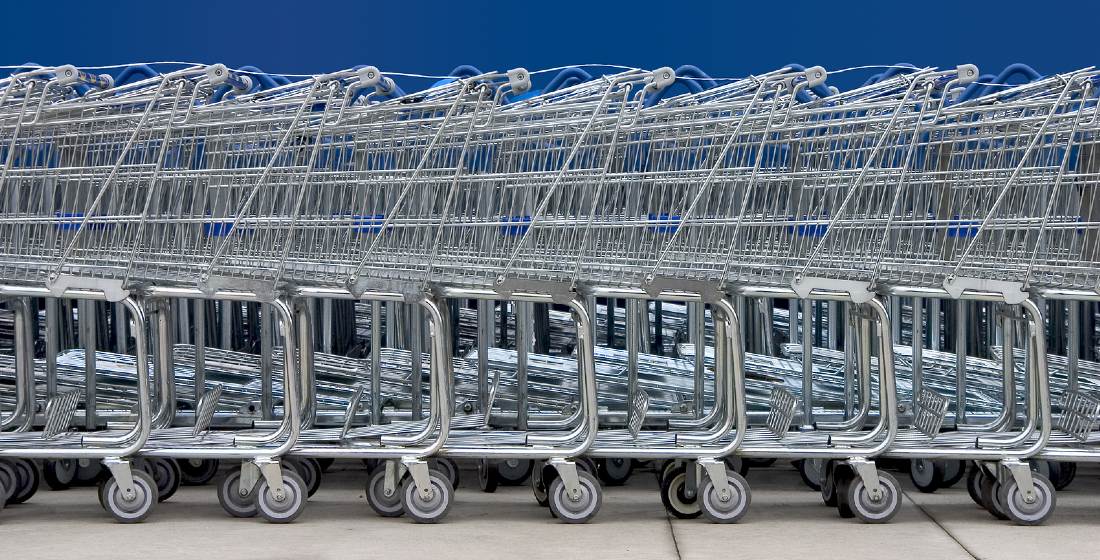Get Happy? In protectionism there’s still opportunity, survey says
It’s not often nowadays that trade financiers get a positive survey to chew upon. Stuart Nivison digests HSBC’s latest Navigator Survey with TXF. Is the remarkable degree of positivity in global corporates’ trade outlook pure Animal Spirits or something more canny in operation?

I’m an economist and, as the old joke goes, I have predicted five of the past one recessions. Positive surveys on trade don’t sit naturally, but they sure do make a change. You only need to look at other leading indicators, such as global manufacturing purchasing managers indices or the IMF’s latest World Economic Outlook to see not everyone is dancing in the streets.
HSBC’s latest Navigator Survey: Now Next and How, published on 5 November, marks a step change from the run of negative news on confidence about trade. Surveying more than 9100 companies across 35 countries in August and September, this is a poll worth a second glance. Globally, nearly half the companies questioned (47%) are more optimistic than they were last year.
“The biggest surprise so far is the overwhelming degree of optimism despite all the noise businesses hear about geopolitical instability and trade protectionism,” Stuart Nivison, HSBC’s head of client network banking, tells TXF. “It seems counterintuitive. And the fact that nearly half are more optimistic than last year goes against the mood music in the market.”
On closer inspection, nearly eight in 10 companies (79%) are expecting their sales to go up over the next year, and fully 81% thought their sales internationally would increase, which is also higher than last year’s survey.
How does that reflect HSBC’s own trade book – bearing in mind, the survey comes out a week after some relatively downbeat third quarter results for the bank itself? “There are some trends underneath which fit with what our customers are telling us,” Nivison says. “I’ve been involved in trade finance for a long time and if you look at the regional variations, in particular within Asia, there are two patterns that you see. One of them is that there are a group of countries and companies in those countries that are benefiting from changes in the supply chain and that is overwhelmingly positive.”
Shifting supply chains in action – China plus
Asia is a case in point. “It’s no surprise that places like Vietnam, Indonesia, India, Bangladesh, which are 96% to 99% [positive], expect sales to increase,” Nivison says. “A lot of that is supply chains repositioning themselves and more manufacturing coming from there.”
Companies in other Asian economies were less sanguine, but the majority – including those with more mature trade economies and more direct exposure to mainland China (and the US) – still expected growth. South Korea companies were 64% positive, Japan (57%), Hong Kong (52%).
Causation versus correlation (again)
To what extent is trade protectionism itself causing the changes, or is it just correlation?
“The large corporates that I speak to that are repositioning some of their supply chains, quite often it's not that they're going to cease sourcing from China. It's more what we call the ‘China plus’ strategy, where they say, ‘we've got a source in China, but we'd also like to source from other countries and get more of a balance’,” Nivison says.
The second pattern is the sentiment relating to the US and mainland China themselves, where confidence for future sales growth remains very strong (80% and 86% of companies respectively). Large and growing domestic markets is likely at the core of this, Nivison says. US consumer spending continues apace and increasing per capita income in China keeps internal demand buoyant. It’s becoming easier for them to sell elsewhere. For instance, China companies are increasing their exports to markets such as ASEAN, India and Latin America. “If you look at these three alone, they account for more China exports than they do to the US.”
The interesting dynamic then is a shifting of supply chains, a shift in exports. “And it means those countries that are supposedly the most impacted by trade wars – China and the US – aren’t, and there are others that are benefiting from a reallocation or repositioning of the supply chain.” And that’s contributing to the degree of optimism in general.
No heads in sands for business
What is behind the companies’ optimism globally? Is it blithe Animal Spirits Keynesian-style – the confidence and ‘gut instinct’ that economist John Maynard Keynes pointed to in the General Theory of Employment Interest and Money back in 1936, that manifested even in times of economic uncertainty? Perhaps not.
The businesses surveyed certainly did not appear to have their heads in the sand about trade wars. The survey says 65% of the companies were seeing increased protectionist activity in government (up from 63% in the same year earlier period). “But the majority of those, 57%, said that they thought that their business would gain from it, which again, appears counterintuitive,” Nivison says. What are they actually doing to benefit from it? First priority, according to the survey, was looking at new markets, the second, focusing on digital and technology investment.
International expansion is seen as the main driver of growth by those firms that were optimistic for growth (38%) as well as being a defensive reaction to new threats (29%). Entering new markets is the joint top change businesses plan to make to their supply chains over the next three years for 28% of respondents (up from 23% in 2018) alongside increasing use of digital technology.
“If you’ve got a complete status quo, people carry on with what they are doing. But if you have protectionism, tariffs, geopolitical issues, companies need to think about adaptation and how to change,” says Nivison. “The fact that so many are looking at new markets and see that as a priority, that they are optimistic about international trade, people are having to look over the parapet and rethink what they are doing.”
Accidental exporters on the rise
Moreover, digitisation is also transforming the way companies can sell cross border. “Once you put your goods online, they’re suddenly globally visible and we’re getting a lot of these ‘accidental exporters’ with orders from places they never expected to sell to and are having to think about their business models. It’s a very interesting dynamic, and the survey says there are only 8% of companies that thought they would be domestic only in three to five years.” For sure, if you are under pressure to put your own goods online, your shop window is the world, and you soon become involved in world trade.
Does the survey relate only to physical goods? Nivison says not. “The split of the survey is approximately 55% trading in goods, 45% in services. Also, the companies range in size from SMEs [which comprise around 5000 respondents] to large corporates.”
All in all, the survey has been a “pleasant surprise” for Nivison. “We could have had people saying that tariffs are bad, trade wars are bad so we’ll stay at home and focus on our domestic markets, but it’s been the opposite. We have come away with the overwhelming feeling that companies see trade as a force for good and a positive thing for the future.”
Again as the eternal pessimist economist, the market in the US seems ‘toppy’. What would happen to sentiment with a turn in the US business cycle? It’s tricky to tell. “Despite all we hear, the global economy is still growing – 2.6% forecast this year and 2.5% next [HSBC forecasts]. If there is a change [in the US] it may affect that, but there’s no sign yet, and it seems in terms of the number of companies intending to increase sales, it’s not as if they’re anticipating things falling off a cliff, or taking a downturn. If anything, it’s the opposite.”
The UK is not immune to the optimistic tone, with the survey pointing to 77% of companies surveyed expecting sales growth and an even higher proportion (86%) expecting international trade to grow. And 39% the companies globally said they put a European country in their top three for expansion in the next three to five years (up from 33% in 2018’s survey).
Strategic relationships growing in importance
While the survey itself didn’t look through the lens of how this trade is likely to be financed, or indeed how the trade finance gap is likely to be narrowed, there continue to be strategic changes in how large companies (and banks and non-banks) are financing supply chains. “We are looking increasingly at the nature of supply chains, the nature of relationships, the forward-looking plans that the large companies have, and not just the transactions individually,” Nivison says. “You can make yourself more comfortable with financing suppliers strategically on a bilateral basis – the wider needs they have based on their place in the supply chain – as opposed to purely financing invoice by invoice. I think trade finance is maturing. The relationships between buyers and suppliers are getting stickier with more longer-term partnership type relationships and not a 'get it cheaply as I can drop you off if I want to’ trade relationship. That's changed. So we need to reflect that in financing. There's still a need for financing for trade finance, there's no question of it.”
Have we reached peak pessimism?
Have we have had ‘peak pessimism’ in terms of protectionism and globalisation? “I’m really hoping so, and that’s certainly what our clients are telling us they are looking for. People are getting on with life. The only ones I’m worrying about are those that are putting their heads in the sand and not thinking about the opportunities out there, and that’s probably the subset who didn’t think sales were going to grow, and that’s a much smaller number.“
"It's not us saying we think the world's a rosy place, but we're just feeding back what these 9100 plus companies have said across the world, which is, they're getting on with it.”
So, for this week at least, I’m parking my traditional economist’s downbeat nature with my choice of songs. The unforgettable Judy Garland singing ‘Get Happy’ from the more forgettable 1950 musical ‘Summer Stock’. Forget your troubles, get happy (I’d omit the bit about judgement day, at least for now, the brittleness is manifest in her eyes).
Now time to get up to speed on the markets.
Here's our exclusive TXF Essentials subscriber content
Expert briefing: Do you know where your money is?
Ann Rutledge, CEO of CreditSpectrum, reflects on the graveyards of ABCP and looks at the dangers of the debt capital markets’ obsessive fixation on origination and whether what happens to capital after issuance has been totally lost in the minds of the financial markets.
Expert briefing: Blurring the lines between developed and emerging markets
Shailesh Kumar, head of country, credit, and economic research at The Hartford, examines the categorisation of emerging and developed markets and whether it is, or should be, changing.
DEWA V: The record low solar tariff bid enigma
Dubai Electricity and Water Authority (DEWA) pulled in record low tariff offers this month for its latest 900MW solar PV scheme – DEWA V. But there was no promise from DEWA of a sovereign guarantee backing the project in the tender document. So how did bids go so low?
Formosa 2: Turbine-charge or trickle-charge for Taiwan offshore?
With the sponsors of the Formosa 2 offshore wind project having having reached financial close on a heavily ECA-backed project financing, confidence in the bankability of Taiwan's developing offshore wind market should be back on the up.
Plus, to top things off...
the news you thought you had but didn't
Sunter EfW plant to reach FC in 2020
Jakarata Solusi Lestari – a joint venture between local government-owned JakPro (56%) and Finland-based Fortum (44%) – is expected to reach close a $240 million IFC-backed loan to finance the 35MW Sunter energy-from-waste (EfW) plant in Indonesia by H1 2020.
Welcome Break closes refinancing
UK-based motorway service station operator Welcome Break - owned by Applegreen and Arjun Infrastructure Partners - has closed the refinancing of around £370 million ($476 million) of debt.
Wellington solar farm seals EDC-backed loan
Lightsource BP has reached financial close an EDC-backed loan to finance the 200MWp Wellington solar farm in Australia.
Formosa 2 offshore wind project reaches FC
Following debt signing earlier this month, the 376MW Formosa 2 offshore wind scheme in Taiwan has reached financial close.
RAPID nears signing on final ECA-backed facility
Sponsors of the $15.3 billion Pengerang Refining and Petrochemical Integrated Development (RAPID) scheme in Malaysia – Saudi Aramco (50%) and Petronas (50%) – are expected to sign on the final ECA-backed portion of the debt package backing the scheme imminently.
Seagreen offshore wind out to banks
A funding package for SSE’s 1.1GW Seagreen offshore wind project in the UK has been launched to the bank market by financial advisor MUFG.
MIGA CEO Keiko Honda steps down
After six-and-a-half years at MIGA, CEO Keiko Honda is stepping down today. From January 2020 she will be joining Columbia University’s School of International and Public Affairs as an adjunct senior research scholar and professor. The selection of a successor is at the final stage.
Premier woman of India trade retires
Geetha Muralidhar, chairman-cum-managing director of ECGC retires on 31 October.
Nam Dinh 1 coal-fired plant to close early 2020
Sponsors of the $2.2 billion 1.2GW Nam Dinh 1 coal-fired power plant in Vietnam – ACWA Power and Taekwang Power – are said to be progressing with signing of a $1.9 billion Sinosure-backed facility to fund the scheme.





